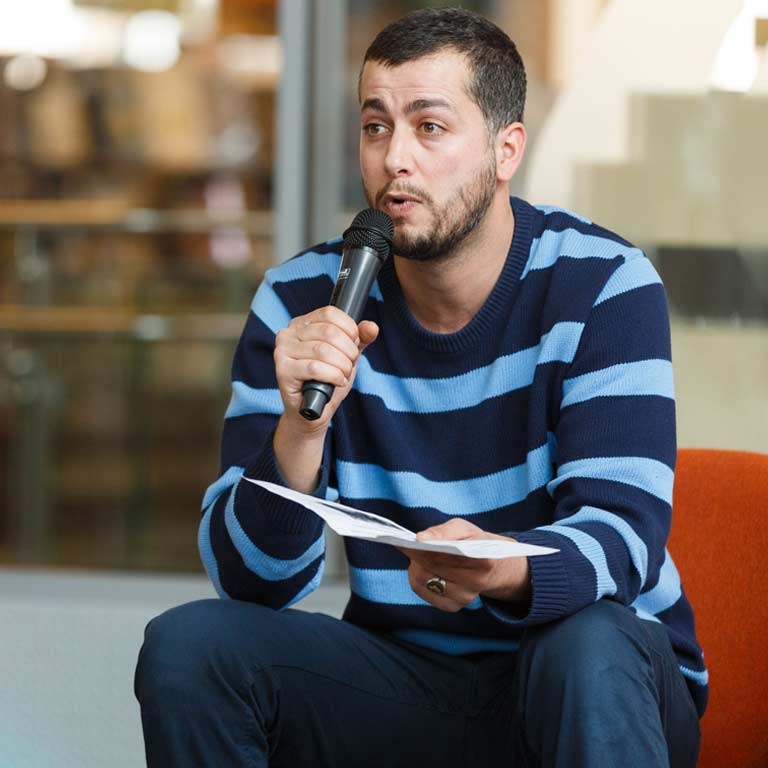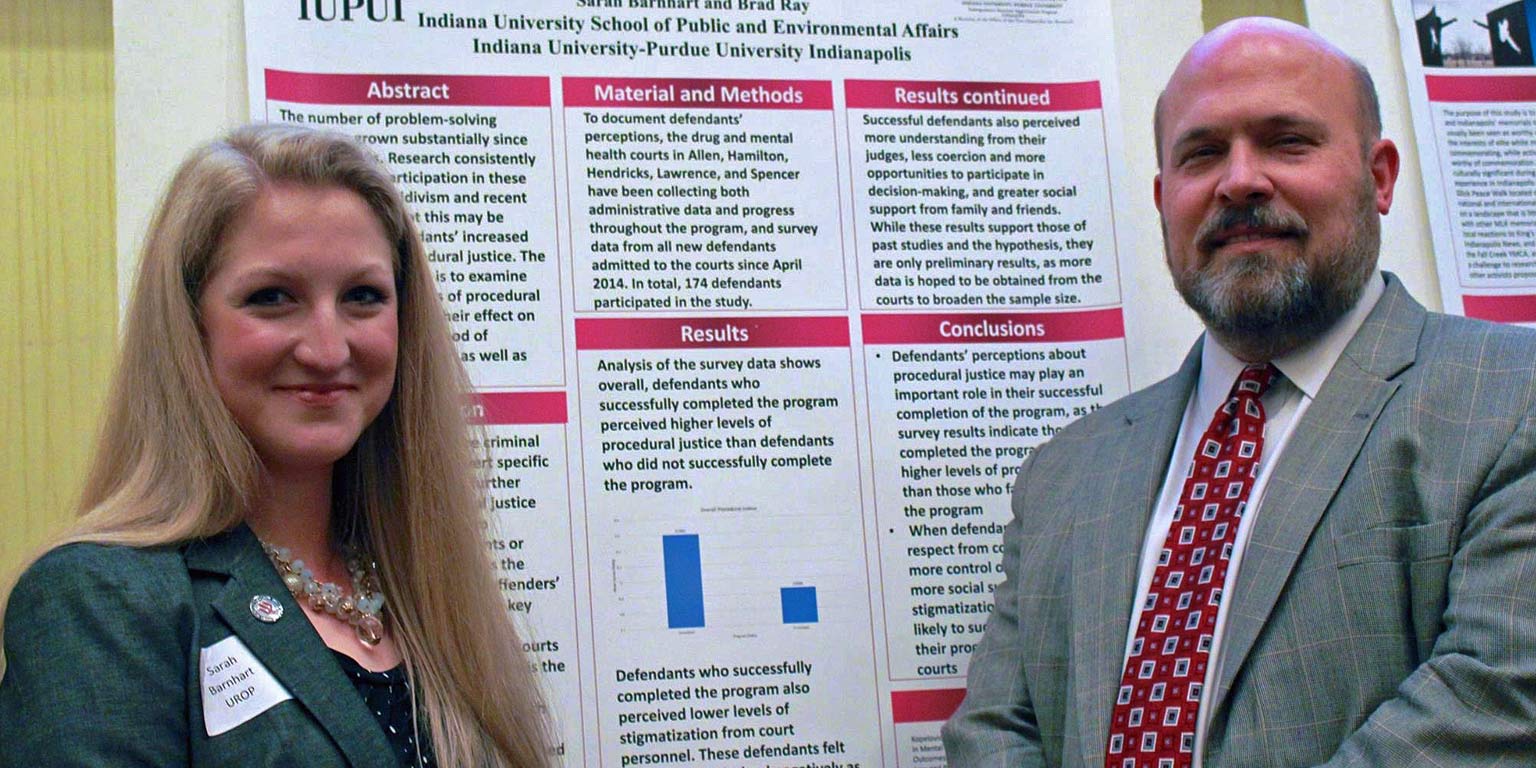Capstone provides undergraduate and graduate students in their final year with the opportunity to share their expertise with the community by tackling real-world challenges that local organizations face. Students work in teams to analyze data and provide meaningful, implementable recommendations by conducting policy analysis, program evaluations, survey research, data mining, and needs assessments. Undergraduate students who are majoring in criminal justice and public safety management engage in evidence-based practice and research that informs effective policy.
The intersection of theory, learning, and practice: O'Neill Capstone classes
Each Capstone group is just four or five students, compared to 40 or more in other programs.
Our classes tackle real-life projects, not case studies.
Recent Capstone projects
Agency: Marion County Commission on Youth
In 2009, the City-County Council of Indianapolis and Marion County selected the Marion County Commission on Youth (MCCOY) to manage its Early Intervention and Prevention (EIP) Initiative, which works to eliminate child abuse, child neglect, and juvenile delinquency.
In 2012, MCCOY engaged a SPEA Capstone class to evaluate the EIP initiative’s effectiveness and provide recommendations for the initiative going forward. The group found that certain strategies have been more successful than others because MCCOY did not have enough resources to accomplish all of its goals, and because participation by community partners had declined since the initiative’s launch.
Capstone students recommended that MCCOY pursue lead partners and encourage them to take greater ownership, increase human resources, maintain and/or strengthen current relationships with participating organizations and individuals, reduce the number of strategies, and increase focus on those maintained. The Capstone group also developed checklists and tools for MCCOY to use in future evaluations.
Agency: Bicycle Indiana and INDYCOG
Capstone students assessed how much bicyclists and motorists know about safe bicycling practices. Students surveyed cyclists and drivers, analyzed the results, and produced recommendations for a bicycle safety education campaign.
Agency: Ransom Place Neighborhood Association
The Ransom Place Neighborhood Association engaged students to help revitalize the historic neighborhood near the IUPUI campus. After conducting research, students developed three recommendations.
The first was to become more involved in residents’ issues, by assisting with maintenance and landlord issues, joining the Indianapolis Neighborhood Resource Center, and developing a website.
Second, Capstone students advised the RPNA to work more closely with Indianapolis city departments and local organizations.
Third, the RPNA could improve neighborhood cohesion by including residents on its board, integrating the student and non-student populations, participating in an annual service project, and leveraging student technological expertise to document the neighborhood’s history.
Agency: IUPUI Parking and Transportation Services
In an effort to reduce single-occupancy vehicle use on campus, IUPUI Parking and Transportation Services asked the Capstone group to assess transportation alternatives for IUPUI students, staff and faculty.
The group reviewed IUPUI’s Master Plan, surveyed the campus population to determine transportation needs, completed both transit and land use analyses, assessed transportation alternatives, and made recommendations. Those included an automated people mover, carpooling, transit use, and bicycle use. The group also suggested ways to fund and expand those options.
Agency: EmployIndy
EmployIndy, Marion County’s workforce development organization, needed a way to share data. Students evaluated how other workforce development organizations compile and use data, determined best practices, and developed a digital dashboard. The Capstone group also suggested using an outside organization to create and maintain that digital dashboard, and recommended that it incorporate data from STATS Indiana, the Bureau of Labor Statistics, and the Census Bureau.
Agency: Indianapolis Cultural Trail
The Indianapolis Cultural Trail wanted to determine the trail’s economic impact. Capstone group research determined that the Cultural Trail has a positive economic impact on the City of Indianapolis ranging from $567,284 to $6,182,776. The group further recommended that Indianapolis Cultural Trail develop a trail counting program, expand directional signage to the trail, and educate the public on its connectivity.
Agency: IUPUI
IUPUI asked students to analyze entrepreneurship support services at the university. The Capstone group found that IUPUI offers these services, but support is weak. Students recommended that the campus develop a co-working space dedicated to entrepreneurship and providing services including access to technology, coaching/mentoring, access to funding, and research tools. The class also supplied the university with a five-year implementation plan.





